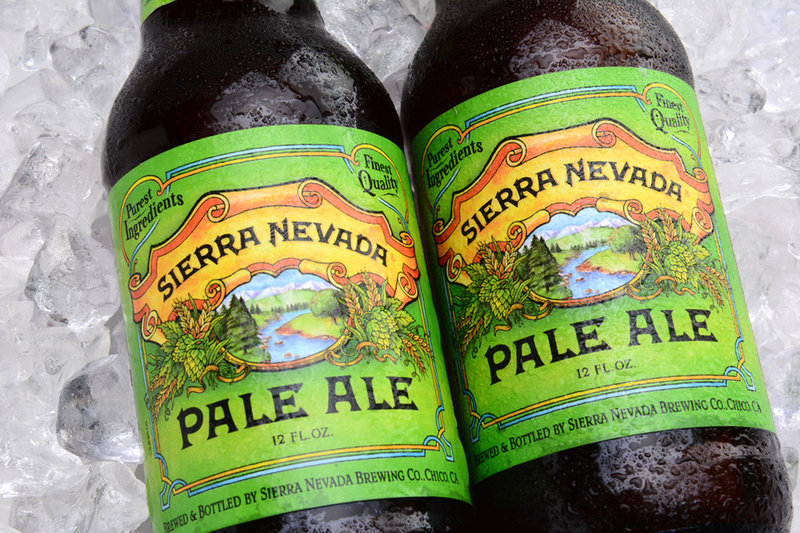
Beer
How craft beer is exploring the value market
The craft beer category has been defined as much by its pricing strategy as its flavour profile. But, is the premium positioning being eroded? And, more importantly, are craft brewers complicit? Stephen Beaumont considers the prospect of 'value craft'.
L
ast year, as the first month of Covid-19 gave way to the second, with no idea of how many more pandemic months were ahead, the corridors of the global brewing industry echoed with uncertainty.
Would governments support business? Would consumers drink as much beer as they had a year earlier? Would they drink more? Were we perhaps heading toward prohibition?
As more data came in during April and May, however, patterns began to appear and that initial confusion and insecurity gradually gave way to something approaching a 'new normal'.
People were still drinking as much – possibly more – than before, and even with bars and restaurants shut tight, brewers were finding ways to sell beer, pivoting to new distribution models and, in many cases, profiting from packaging in cans rather than kegs.
New provisions that allowed for direct-to-home delivery also helped smaller operations stay afloat.
Shifting habits
Ultimately, a pair of consumption patterns emerged. At one end of the industry, consumers of the big, mass-market beer brands were seeking comfort in the familiar, those bedrock brands upon which much of the late-20th Century beer market was based, while at the other end, 'buy local' went from craft beer marketing slogan to general, beer-buying mantra.
In the case of the latter, local support proved pivotal to the metaphorical bloodletting of the craft segment that ended up being not nearly as bad as was initially predicted. Having recently completed a broad overview of the global craft brewing industry, I've found that the impact of Covid-19 upon the number of brewers worldwide has been mostly negligible.
Not only has the number of closures in big markets like the US and Brazil not been statistically different from what was seen a year prior, but some smaller markets, Paraguay and Ecuador, for example, actually added brewers in 2020.
Which brings us to the present day and our view forward.
It's no surprise that the global economy has taken quite a hit over the past year, with millions more unemployed, laid off or furloughed than in pre-pandemic times, and millions of others earning less than they did pre-Covid-19.
how can the craft brewer adapt to a value-minded consumer if and when the importance of 'buy local' begins to wane?
As such, it's equally unsurprising that, last August, GlobalData discovered in its survey of consumers that value brands were on the rise as cash-strapped beer drinkers chose to trade down in their selections.
While some economists are bullish in their expectations of a coming economic boom that could rival what was seen post-war, others caution that it may take some time yet before consumer confidence is sufficiently restored that super-premium and luxury brands get a boost.
And, here's the craft beer conundrum: In an industry segment built upon higher pricing as an indicator of superior quality, how can the craft brewer adapt to a value-minded consumer if and when the importance of 'buy local' begins to wane?
Crafting value with consumers
One approach that already seems to be gaining traction in North America is the lowering of perception, if not actual price. At the helm of this movement is the style – or, more properly, styles – known as 'Mexican lager'.
Most commonly, this is an adjunct lager designed as a sort of upscale riff on Corona, although sometimes it's closer to a Vienna lager, such as Dos Equis Amber or Bohemia.
In either format, though, its purpose seems to be to appeal to the value-minded, mass-market drinker, even when it's priced more in-line with craft-brewed pale ales or IPAs.
In a similar vein is the radler, that generally low-alcohol combination of beer and lemonade or beer and fruit juice consumed widely across Germany and Austria, but until a decade or so ago effectively unknown in any other beer market.
Now commonplace throughout the Americas and many parts of Europe, radlers appeal to casual beer drinkers and those who want a fuller, sweeter flavour without excessive alcoholic strength, even crossing over into the 'I don't like beer' crowd.
Like the Mexican lager, the choice of a radler is often viewed as 'trading down', even when the cost remains well above that of a value-brand beer.
Finally, although not yet to my knowledge value-priced in any market, hard seltzers have an undeniable sub-premium reputation in craft brewing circles, even as many craft brewers rush to get their interpretations onto store shelves.
While some of these are doing their best to define a 'craft hard seltzer' niche, most are simply more-or-less replicating what has already worked so well for White Claw and Truly, with pricing comparable to – or even above – what those big name brands command.
It remains to be seen if these forays are the first steps towards the establishment of a 'value craft' category, or whether brewers are simply attempting to map their way through the pandemic by broadening their market appeal.
Either way, the danger inherent in the strategy is that the eroding of the premium nature of craft beer may prove more detrimental in the long term than the boost to revenues is beneficial in the short term.

Sierra Nevada’s Pale Ale paved the way with its launch in the ‘70s